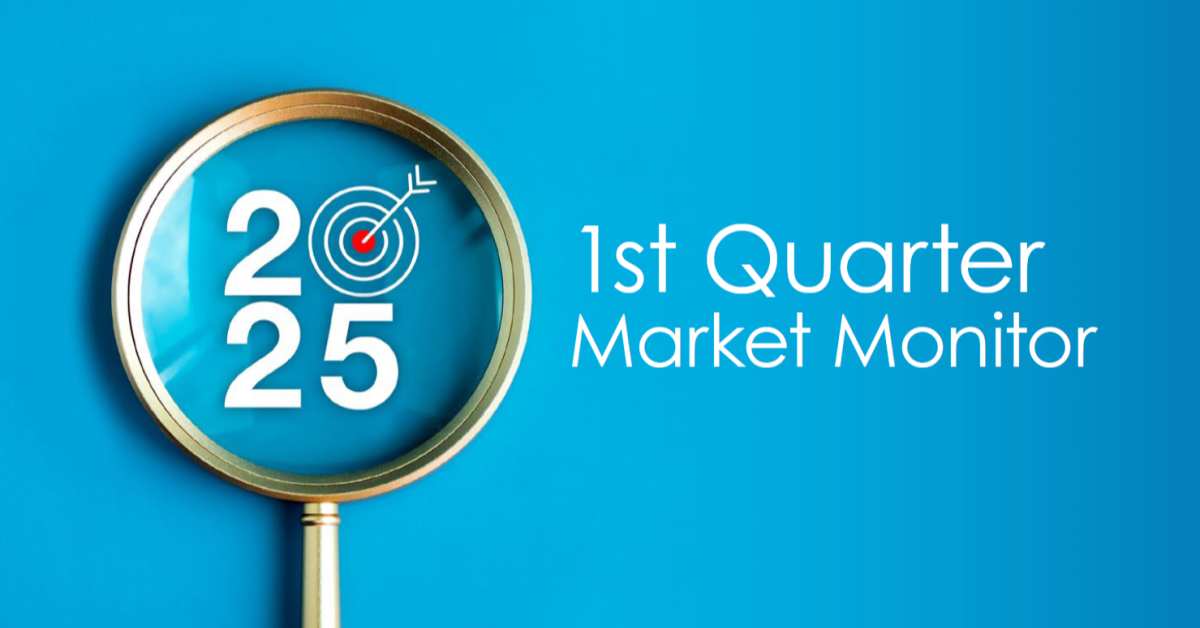Market Commentary
- The votes have been tallied and any hopes for a sustained rally in July were quickly dashed as markets experienced a bear market rally through the remainder of the third quarter. Markets broadly made new lows on the same mix of concerns that have plagued 2022.
- Murmurs of a recession turned to shouts as 2Q U.S. GQP figures were released in July (-0.6%) inking two consecutive quarters of GDP contraction, a common signal for recessionary environments1. While economists remain locked in conclave debating the official status of recessions, we will swiftly note that timing a recession (or lack thereof) is a distraction for investors. Since 1950, markets on average have peaked seven months before the economy and bottomed four months prior2.
- However, the Federal Reserve, whose dual mandate of price stability and full employment, is obligated to focus on recession concerns. The Fed has made clear its near-term priority is bringing inflation down. Fed Chair Jerome Powell after announcing an increase of the Fed Funds rate by 0.75% in September said “Higher interest rates, slower growth, and a softening labor market are all painful for the public that we serve. But they’re not as painful as failing to restore price stability”3
- The Fed’s actions and guidance squashed the market’s seemingly misguided narrative for a “Fed Pause” in interest rate hikes. Such hope was borne after just a few better readings of inflation. Year over year inflation in June (+9.1%), July (+8.5%) and August (+8.3%) sparked hope for peak inflation, but the August reading left investors and the Fed unconvinced4. A 10.5% decline in gasoline prices over the month explained much of the modest reduction, but electricity and shelter prices, the stickier parts of inflation, continued to rise5.
- These conditions further exaggerated volatility in fixed income, widened the disparity between growth and value stocks and, as of late, put pressure on international assets due to the strength of the U.S. Dollar.
Fixed Income
- The Bloomberg U.S. Aggregate (Agg) continued its slide closing the quarter down -4.8% and -14.6% for the year4. If 2022 concluded now, this would be the worst calendar year on record for the Agg. While not record-setting everywhere, most other major fixed income indexes followed a similar pattern of price pressure under the regime of higher rates4.
- Elevated volatility in the bond market comes from the Fed’s relentless pursuit of price stability via higher interest rates. The Fed has moved faster and more aggressively in 2022 than any other policy change since the 1980s4. These changes have had a disproportionate effect on the front end of the yield curve and as a result the 2-year / 10-year yield curve spread inversion deepened to -0.39% as of September 30 from +0.79% at the beginning of the year4. Market prognosticators often look to yield curve inversion as a harbinger for a future recession.
- However, credit markets have not reflected the same increase in concern of recession as have interest rates. Over the quarter, yields on investment grade and non-investment grade bonds were largely flat (+4 bps and -17 bps respectively) indicating a more sanguine tone for potential future losses4.
- Finally, foreign bonds received a one–two punch of both local price pressure from central banks globally increasing interest rates to fight inflation and the strength of the U.S. Dollar. Fifty-four central banks globally have increased their policy rate in 2022 leaving only six untouched or lower on the year4.
Equity
- The fight against inflation is a global phenomenon. In August, developed country inflation was 8%6 and emerging markets was 5.3%6. This has led nearly 90% of central banks globally to raise their policy rates4. This “foot on the brakes” mentality from monetary authorities coupled with the backdrop of slowing economic growth has been trying for most risk assets.
- In the U.S., 9 of 11 sectors produced negative returns for the quarter4. The energy sector was one of the lone bright spots up 2.3% for the quarter adding to its lead in 20224. Growth securities continue to come under pressure with rising rates. Businesses once prized for their potential to grow faster in the future are being sold in favor of businesses with current earnings. The disparity between growth and value stocks is as wide as it has been since the Technology Bubble in 1999/2000 with Russell 1000 Value down -19% YTD and the Russell 1000 Growth down -31.1%4.
- Outside of the U.S., Europe is still reeling from reverberating effects of Russia’s invasion of Ukraine, new political leadership and energy price uncertainty. Power prices have risen across the region following the rise of European gas prices of +128% YTD4. With winter around the corner consumer anxiety is building regarding heating costs. China, the single largest country in the MSCI Emerging Markets Index, helped drive the index lower. Slowing economic growth prospects, COVID-Zero polices, and a local real estate rout have pushed valuations to levels not seen since the financial crisis in 2007/2008. China now trades at 9.6x forward PE, well below its 25-year average of 11.7x6.
- The nearly universal cause for foreign prices moving lower though has been a stronger U.S. dollar. YTD the USD has strengthened in some instances as much as 30% to individual currencies and showed widespread strength against other major markets like the Euro (-13.85%), the Japanese Yen (-20.44%) and the Chinese Renminbi (-10.12%)4. This creates a headwind for U.S. investors regardless of local returns in these markets as those investments are translated back to USD.
Real Assets
- With the Fed prioritizing price stability over the labor market, real assets may be exposed to slowing demand should a recession take place. As a result, commodities broadly pulled back in the third quarter though still outperforming their equity and fixed income peers. They remain one of the brighter spots YTD benefiting from supply constraints and inflation pressures.
- Energy assets have stayed in the spotlight given their role with geopolitical tensions in Europe and their material influence on headline inflation. Oil prices have largely been decreasing following an early June peak but remain positive for the year with WTI Oil closing the quarter at $79.5 per barrel vs $75 at the start of the year4. Natural gas has followed a similar pattern, but price remains well above early 2022 levels with regional natural gas up +128.3% YTD. European rationing programs to curb demand for and build stockpiles of natural gas have been effective in the short-term, but time will tell as cooler temperatures take hold across the continent the true impact of these programs.
- In real estate housing prices cooled following their recent torrent climb. Median home-prices have risen from $358,800 at the beginning of 2022 to $389,500 as of August 31st4, an 8.6% increase nationally and more than 30% in some local markets. Part of the price decline can be blamed on affordability. With prices up and mortgage rates climbing to 6.75% for the first time since 2008, the average monthly payment on a 30-year mortgage increased by ~$9004.
Markets continue to remain volatile and make new lows on the same mix of concerns that have plagued 2022 thus far. Uncertainty around economic growth has resulted in elevated market volatility which is likely to continue in the near term. Macroeconomic factors such as global inflation, tightening monetary policy and supply chain logistics are contributing to slowing global demand. Higher interest rates in the U.S., along with recent elevated concerns for growth stemming from Europe, have provided a tailwind for the U.S. dollar. The pace of the current rate hiking cycle is among the fastest we’ve experienced, as the Fed remains steadfast in its mission to combat inflation at the potential expense of slowing economic demand. As we continue to experience volatility and downward pressure in the market, it is important to remain committed to a thoughtfully diversified portfolio.
- BEE Q2 2022
- Fiducient Bear Market Field Guide June 20, 2022
- Transcript of Chair Powell’s Press Conference September 21, 2022
- FactSet. As of September 30, 2022
- JPMorgan, Notes on the Week Ahead September 19, 2022
- JPMorgan Guide to the Markets September 30, 2022
This report is intended for the exclusive use of clients or prospective clients of HCR Wealth Advisors. The information contained herein is intended for the recipient, is confidential and may not be disseminated or distributed to any other person without the prior approval of HCR Wealth Advisors. Any dissemination or distribution is strictly prohibited. Information has been obtained from a variety of sources believed to be reliable though not independently verified. Any forecasts represent future expectations and actual returns; volatilities and correlations will differ from forecasts. This report does not represent a specific investment recommendation. The opinions and analysis expressed herein are based on HCR Wealth Advisors’ research and professional experience, and are expressed as of the date of this report. Please consult with your advisor, attorney and accountant, as appropriate, regarding specific advice. Past performance does not indicate future performance and there is a possibility of a loss.
Comparisons to any indices referenced herein are for illustrative purposes only and are not meant to imply that actual returns or volatility will be similar to the indices. Indices cannot be invested in directly. Unmanaged index returns assume reinvestment of any and all distributions and do not reflect our fees or expenses.
Bloomberg U.S. Aggregate Index covers the U.S. investment grade fixed rate bond market, with index components for government and corporate securities, mortgage pass-through securities, and asset-backed securities.
Russell 1000 Value measures the performance of those Russell 1000 companies with lower P/B ratios and lower forecasted growth values.
Russell 1000 Growth measures the performance of those Russell 1000 companies with higher P/B ratios and higher forecasted growth values.



